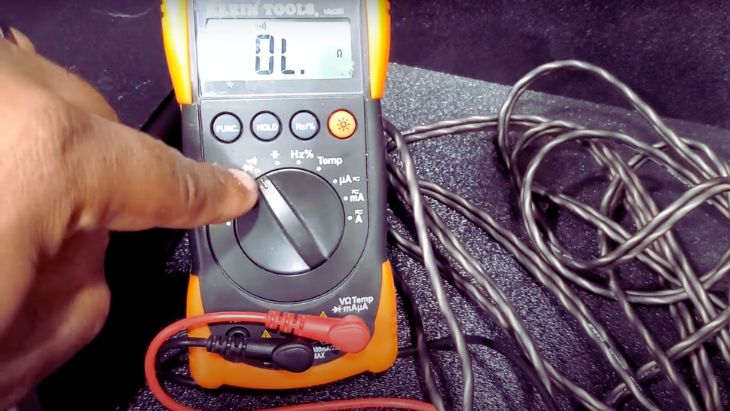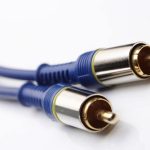RCA cables are great for connecting stereo units to speakers and amps. They are simple to use and efficient. Their color markings make them easy to install, even for a first-timer. It is important to test the voltage output of the RCA on your head unit to check for any issues. In this guide, we will show how to test RCA output voltage.
Essentially, you test the RCA voltage output with the help of a multimeter. That way, you get to know the exact problem with your audio components.
RCA Cable Explained
RCA is a connector cable that carries audio/video (AV) signals. It is among the oldest cables used to connect car stereos to amps.
An RCA cable, also known as an AV jack, photo connector, or RCA connector was originally designed for radio-phonograph consoles. It was preferred due to its basic design and cost-effectiveness. It can be disconnected and reconnected easily when servicing the console.
A standard RCA connector features a male and female plug. The male plug comprises a pin situated at the center and surrounded by a connector band. The female plug, on the other hand, has a pinhole surrounded by a connector band.
Creating an RCA connection is done by pushing the RCA plugs into the color-matching RCA sockets. The typical colors of RCA connectors are:
- Red- Right audio channel.
- Black or white- Left audio channel.
- Yellow- Video.
Why Test RCA Output Voltage
It is important to test RCA voltage to determine whether there are any problems with the connection or audio components that you cannot tell without testing.
A multimeter can assist you to determine the source of the problem. Once you know the exact problem, you can fix it easily instead of doing trial and error.
Besides, using a multimeter is simple. It saves you from the cost of calling in a professional to check and fix the issue. Besides, you only need a few minutes of your time to test.
How to Test RCA Output Voltage with a Multimeter
Here are the steps to follow to measure the voltages of RCA outs on a stereo:
Step 1– Get the multimeter ready by setting it as per the test you want to carry out. To test the voltage, you will need to set the multimeter to the AC voltage point.
Step 2– Upon setting your multimeter, check for the signal frequency of the RCA output.
Step 3– Turn the volume of the audio source high to ensure the RCA output gets a powerful signal. That way, you will find it easier to test the output voltage more accurately.
Step 4– Next, click the probes of the multimeter with the female and male RCA plugs. Now, check the AC voltage of the plugs.
Step 5– If you are testing the voltage output of a car stereo, set the voltage of the multimeter to DC.
Step 6– Check the voltage of the screen of your multimeter.
Step 7– If you notice a continuous voltage band going up and down on the multimeter, it means your RCA output is working properly.
Step 8– If you get low voltage readings on the multimeter display, it means there is a fault with the RCA cable or the RCA output.
Step 9– You can also measure the RCA output resistance. The lower the resistance, the better the audio quality.
How to Prevent Your RCA Cables from Getting Damaged
Rather than waiting for your RCA to misbehave, there are certain precautions you can take to prevent it from damage. For instance, you may want to use nickel-plated RCA to prevent the connector from getting corroded. However, nickel-plating affects the signal quality.
Also, you may consider using copper and silver RCA connectors to improve the signal quality. However, there may be corrosion that will affect the signal voltage and damage the connector.
If you want superior signal quality and protect the RCA connector from corroding, your best bet is to use a gold-plated RCA connector. Although it is costlier than copper or silver, it is not susceptible to corrosion.
Final Thoughts
Now that you know how to test RCA output voltage, you will find it easier to check for any problems with the RCA output of your stereo, amp, or RCA cable. You only need a multimeter to test the voltage and establish whether there is any issue with the RCA or audio component. If the cable is damaged, consider replacing it with a new one. Also, if any audio component is damaged, consider having it repaired or replaced.
Michael Evanchuk is a San Francisco-based sound engineer with 20 years’ experience installing, troubleshooting, and repairing commercial, automotive, and household sound equipment. Evanchuk owns an auto stereo center, where he offers highly competitive car audio installation and repair services. He has written dozens of articles on different sound engineering topics, all of which have been published in leading journals, blogs, and websites.





